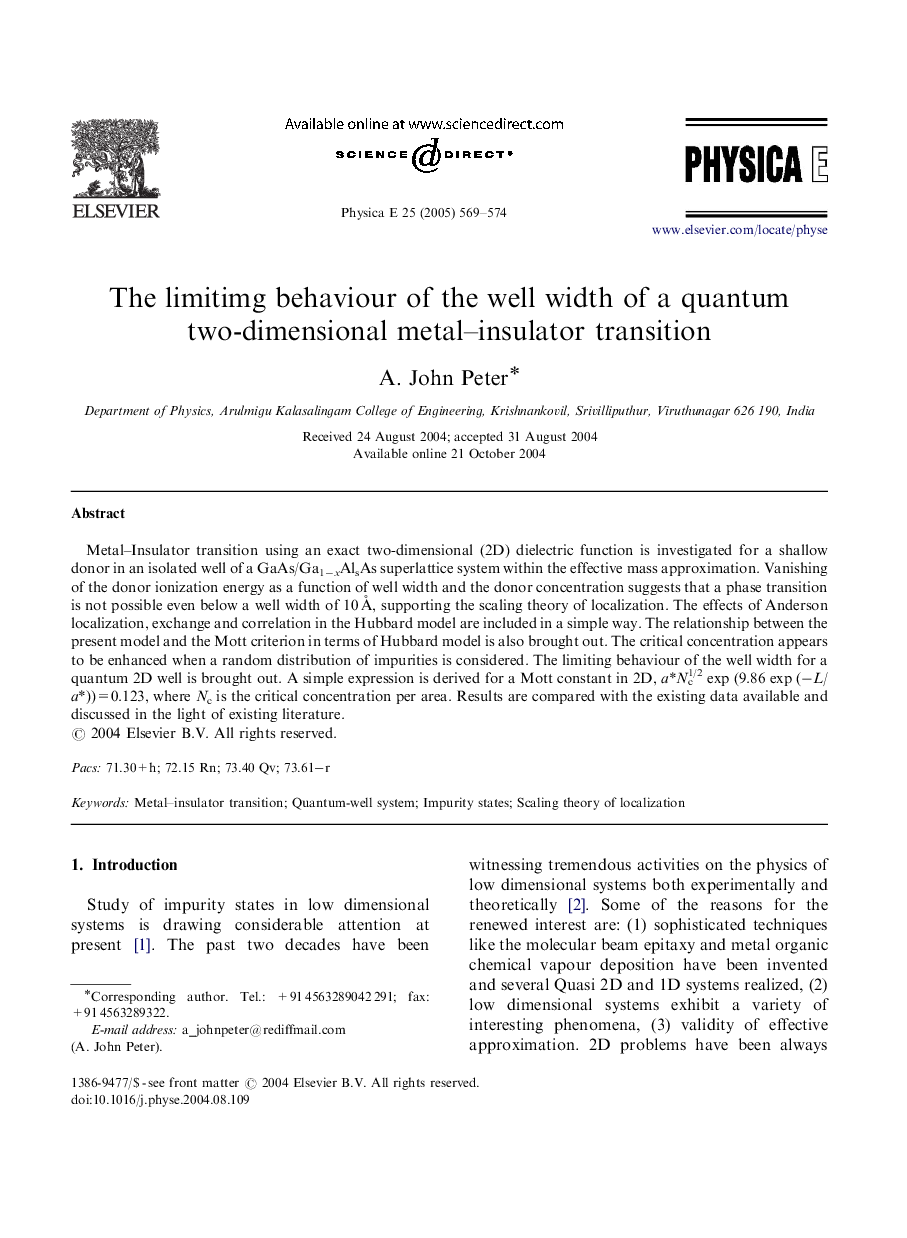| کد مقاله | کد نشریه | سال انتشار | مقاله انگلیسی | نسخه تمام متن |
|---|---|---|---|---|
| 10642360 | 997649 | 2005 | 6 صفحه PDF | دانلود رایگان |
عنوان انگلیسی مقاله ISI
The limitimg behaviour of the well width of a quantum two-dimensional metal-insulator transition
دانلود مقاله + سفارش ترجمه
دانلود مقاله ISI انگلیسی
رایگان برای ایرانیان
کلمات کلیدی
موضوعات مرتبط
مهندسی و علوم پایه
مهندسی مواد
مواد الکترونیکی، نوری و مغناطیسی
پیش نمایش صفحه اول مقاله

چکیده انگلیسی
Metal-Insulator transition using an exact two-dimensional (2D) dielectric function is investigated for a shallow donor in an isolated well of a GaAs/Ga1âxAlsAs superlattice system within the effective mass approximation. Vanishing of the donor ionization energy as a function of well width and the donor concentration suggests that a phase transition is not possible even below a well width of 10Â Ã
, supporting the scaling theory of localization. The effects of Anderson localization, exchange and correlation in the Hubbard model are included in a simple way. The relationship between the present model and the Mott criterion in terms of Hubbard model is also brought out. The critical concentration appears to be enhanced when a random distribution of impurities is considered. The limiting behaviour of the well width for a quantum 2D well is brought out. A simple expression is derived for a Mott constant in 2D, a*Nc1/2 exp (9.86 exp (âL/a*))=0.123, where Nc is the critical concentration per area. Results are compared with the existing data available and discussed in the light of existing literature.
ناشر
Database: Elsevier - ScienceDirect (ساینس دایرکت)
Journal: Physica E: Low-dimensional Systems and Nanostructures - Volume 25, Issue 4, January 2005, Pages 569-574
Journal: Physica E: Low-dimensional Systems and Nanostructures - Volume 25, Issue 4, January 2005, Pages 569-574
نویسندگان
A. John Peter,